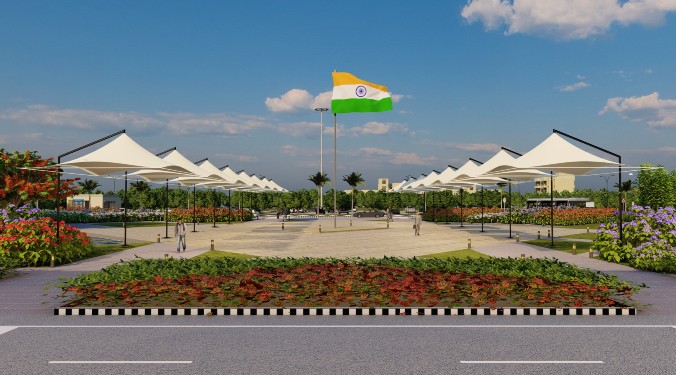“Architecture is now gaining respect and more and more people are turning towards professional architect or professional interior designer to do up their houses or offices,” remarks Architect Sanjay Porwal, Kalayojan Architects
Kalayojan Architects is a technologically advanced firm with its roots rooted to the ground according to the local and climatic context. In an exclusive interview with ACE Update, Architect Sanjay Porwal shares how architecture can influence the way we live.
India and architectureIn simple term, the word “profession” means an expertise in a particular area. People turn to professionals when they want to do a particular thing and do not know how to go about. It is true that architectural profession is gaining acceptance in India. About two or three decades back, this profession was not really looked up to. In villages nobody needed an architect. It was a local mason who used to guide about arrangements of various rooms. At best a local government surveyor would draw a plan at a very meagre fee.
The committee head was shocked to hear this fee and said that in the neighbouring district town there is a person who makes the drawing for just Rs. 500. In BMC, Ar. Sanjay Porwal supposes they still have provision for plans to be signed by a surveyor. This trend is definitely now declining. Architecture is now gaining respect and more and more people are turning towards professional architect or professional interior designer to do up their houses or office.
Post independence, in the PWD- and BMC-dominated culture, the civil engineer has majorly dominated over a professional architect. Even now the building plans in the BMC are approved by engineers and not architects. Hence one can see the buildings in the metros are more bye-laws oriented rather than design oriented. The creativity of the architect would find a place only in elevation. Hence largely in metro cities like Mumbai architecture is limited to being just skin deep. Whereas the buildings are planned by the bye-laws and building regulations, there could be body of architects (just like we had Urban Arts Commission in New Delhi) which approves the plan for its design and for its effect and impact in its neighbourhood local/urban context and in context of the environment. Architecture cannot be merely confined to tangible means of building bye-laws. It is far beyond in terms of philosophy, creativity, environmental impact. It affects the habits and behavioural pattern of people. Architecture can influence the way we live.
Recently Ar. Porwal learnt that in Nasik Industrial Area, the practice of getting drawings approved from the authority will be stopped and architects would be made responsible for what they do. As a doctor does not need confirmation from any other body to prescribe medication or a lawyer does not confirm with any other authority while giving advice to the clients, an architect doesn’t need to be obliged to any such authorities for executing the design, he feels.
Growing value to Kalayojan ArchitectsMost of Kalayojan’s projects have been outside Mumbai where the firm found greater sense of freedom, creative approach and heartfelt design-based solutions due to lesser restrictions by building regulations. Kalayojan not only excelled in such projects but also won certain design awards. With larger acceptance of architecture as profession and given greater freedom, its kind of practice will gain more importance even in metros like Mumbai.
Favourite projects to design Ar. Sanjay Porwal wishes that he can build a very tall building in Mumbai. When we see the Kanchenjunga Building of Charles Correa at Kemps Corner, Mumbai, there is no other building compared to that. Charles didn’t need any other tall building in Mumbai to make his presence felt. Kalayojan wants to build a tall building in Mumbai because whatever projects it is doing is horizontal designs. Its structures rarely go five-storey high because of the campus projects that it does. Kalayojan looks forward to building more technology-oriented buildings. It is a technologically advanced firm with its roots rooted to the ground according to the local and climatic context.
3
Cookie Consent
We use cookies to personalize your experience. By continuing to visit this website you agree to our Terms & Conditions, Privacy Policy and Cookie Policy.









